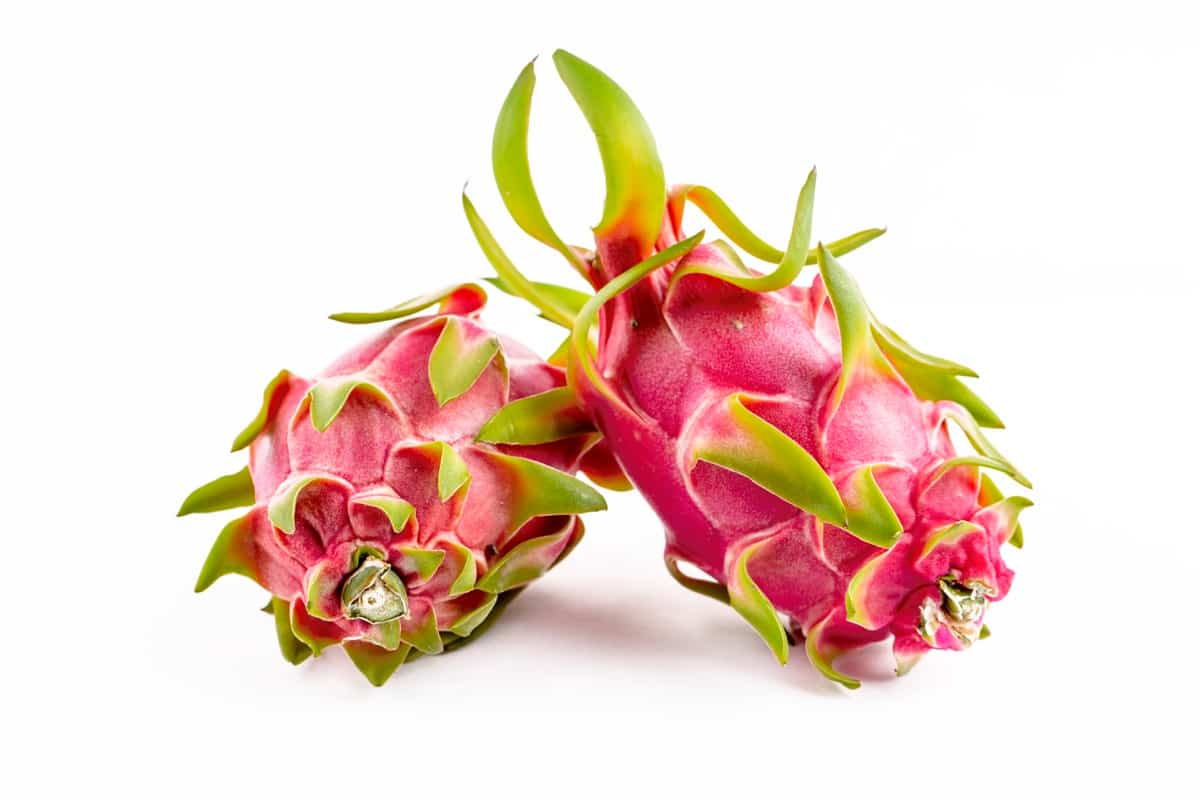Irrigation plays a vital role in enhancing dragon fruit yields. Dragon fruit is highly susceptible to water stress, and consistent moisture is essential for optimal growth and fruit production. Adequate irrigation ensures a stable water supply, preventing drought-induced stress and promoting healthy plant development.

This leads to increased flowering and fruit sets, resulting in higher yields. Moreover, controlled irrigation allows for nutrient delivery, reducing the risk of nutrient deficiencies. Efficient irrigation practices also aid in regulating temperature, providing a favorable microclimate for dragon fruit and further enhancing yield.
Irrigation Techniques for Maximizing Dragon Fruit Yield
Different Irrigation Methods to Optimize Dragon Fruit Production
- Drip Irrigation: This method delivers water directly to the plant’s root zone, minimizing wastage and ensuring consistent moisture, which is crucial for dragon fruit.
- Soaker Hoses: Like drip irrigation, soaker hoses release water gradually along their length, promoting efficient root hydration.
- Furrow Irrigation: Well-suited for large dragon fruit plantations, this method channels water through furrows, promoting even distribution.
- Sprinkler Irrigation: Effective for smaller dragon fruit gardens, sprinklers distribute water overhead, cooling the plants and providing adequate moisture.
- Subsurface Drip Irrigation: This approach places drip lines below the soil surface, reducing water evaporation and minimizing weed growth.
Implementing Drip Irrigation Systems for Increased Dragon Fruit Yield
Implementing drip irrigation systems is pivotal for increasing dragon fruit yield. Drip irrigation directly delivers water to the plant roots, minimizing wastage and ensuring a consistent water supply, which is crucial for this fruit’s growth. The controlled and precise water application through drip lines prevents water stress and reduces weed competition, optimizing resource allocation to the dragon fruit plants.
Additionally, drip irrigation facilitates the targeted application of fertilizers, maintaining optimal nutrient levels. This efficient and water-saving method can significantly boost dragon fruit yield while conserving precious water resources, making it a sustainable choice for growers.
Sprinkler Irrigation Techniques to Maximize Dragon Fruit Harvest
- Timing: Schedule sprinkler irrigation during early morning or late evening to avoid water loss through evaporation and reduce the risk of fungal diseases.
- Uniform Coverage: Ensure the dragon fruit plantation receives even water distribution to prevent water stress and encourage consistent growth.
- Proper Placement: Position sprinklers to avoid wetting dragon fruit flowers and fruits, reducing the risk of fruit rot.
- Adjusting Watering Depth: Tailor the water depth to match the root zone of dragon fruit plants to encourage deep and healthy root development.
- Avoid Overhead Wetting: Prevent excess moisture on the plant’s stems and leaves to reduce the risk of diseases.
In case you missed it: Effective Pest and Disease Management in Dragon Fruit Farms

Benefits of Subsurface Irrigation in Dragon Fruit Cultivation
- Efficient Water Use: It minimizes water wastage by delivering moisture directly to the root zone, reducing evaporation and weed growth.
- Reduced Disease Risk: Subsurface watering keeps the plant’s foliage dry, lowering the risk of fungal diseases common in dragon fruit.
- Improved Root Development: The method encourages deep root growth, enhancing the plant’s stability and access to nutrients.
- Enhanced Yield: Precise and consistent moisture delivery increases flowering, fruit set, and overall fruit production.
- Weed Control: By minimizing surface water, subsurface irrigation reduces weed competition, aiding in resource allocation for the dragon fruit plants.
Micro-Irrigation for Enhanced Dragon Fruit Yield
This approach, including drip and trickle systems, ensures precise and efficient water and nutrient delivery to the plant’s root zone. Dragon fruit is sensitive to water stress, and micro-irrigation maintains a consistent and controlled moisture level, promoting healthy growth and abundant flowering.
It conserves water resources by minimizing evaporation and runoff. Additionally, the precise application of nutrients further boosts fruit production. Micro-irrigation reduces weed competition, optimizing resource utilization and resulting in higher yields, making it a sustainable and yield-enhancing choice for dragon fruit cultivation.
Role of Fertigation in Maximizing Dragon Fruit Production
- Nutrient Precision: Fertigation allows for precise, controlled delivery of essential nutrients directly to the plant’s root zone, ensuring optimal nutrient uptake.
- Timely Nutrient Supply: Dragon fruit plants receive nutrients when needed most, promoting consistent growth, flowering, and fruit set.
- Reduced Nutrient Loss: This method minimizes nutrient leaching and runoff, increasing resource efficiency and reducing environmental impact.
- Improved Crop Health: Fertigation contributes to healthier plants, less susceptible to stress and diseases, ultimately leading to increased fruit production and higher yields in dragon fruit cultivation.
Integrating Smart Irrigation Technologies for Improved Dragon Fruit Yield
- Soil Moisture Sensors: These devices provide real-time data on soil moisture levels, ensuring precise irrigation to prevent water stress.
- Automated Timers: Smart systems adjust watering schedules based on environmental conditions, optimizing moisture levels for dragon fruit.
- Weather Forecast Integration: Smart irrigation systems avoid unnecessary watering and conserve resources by considering upcoming weather patterns.
- Remote Monitoring and Control: Growers can manage irrigation remotely, allowing for immediate adjustments based on plant needs and weather changes.
- Water Conservation: Smart technologies reduce water wastage, promoting sustainable practices while increasing dragon fruit yield through precise irrigation management.
In case you missed it: 10 Common Mistakes to Avoid in Dragon Fruit Farming

Adapting Sustainable Irrigation Practices
- Drip and Micro-Irrigation: These methods minimize water wastage by delivering water directly to plant roots, enhancing efficiency.
- Rainwater Harvesting: Capturing and using rainwater reduces dependence on freshwater sources, conserving vital resources.
- Soil Moisture Monitoring: Regularly assessing soil moisture levels helps fine-tune irrigation, preventing overwatering and water stress.
- Organic Matter Incorporation: Adding organic material to soil improves its water-holding capacity, reducing the need for frequent watering.
- Crop Rotation and Selection: Choosing drought-resistant varieties and implementing crop rotation minimizes water demand.
- Reclaimed Water Use: Treating and reusing wastewater for irrigation reduces the strain on freshwater sources and promotes sustainability.
Overcoming Challenges in Dragon Fruit Irrigation Management
- Water Scarcity: Ensuring a consistent water supply is challenging, especially in arid regions where dragon fruit is often grown.
- Soil Variability: Variations in soil types can affect water retention and distribution, necessitating tailored irrigation solutions.
- Evaporation: High temperatures can lead to water loss through evaporation, affecting the efficacy of irrigation.
- Disease Control: Overhead irrigation can increase the risk of fungal diseases by wetting plant foliage.
- Nutrient Leaching: Excessive irrigation can lead to nutrient runoff, impacting plant health.
To overcome these challenges, growers must adopt efficient irrigation methods, incorporate technology, and adapt practices to their specific environmental conditions for successful dragon fruit cultivation.
What Is The Irrigation Method For Dragon Fruit?
Dragon fruit is typically irrigated using a drip irrigation system. This method involves providing a controlled and consistent water supply to the root zone of the plants directly through a network of tubes, pipes, and emitters.
In case you missed it: Step-by-Step Guide to Establishing a Dragon Fruit Farm

Conclusion
In conclusion, the right irrigation technique maximizes dragon fruit yield. Efficient methods like drip irrigation and fertigation enable precise water and nutrient delivery, reducing water wastage and promoting healthy plant growth. To overcome environmental challenges, embracing smart technologies and sustainable practices is key to achieving optimal yields while conserving resources and ensuring long-term cultivation success.
- Feed Your Flock for Less: Top 10 Tips to Save on Chicken Feed
- Ultimate Guide to Ossabaw Island Hog: Breeding, Raising, Diet, and Care
- Hatching Answers: The Top 10 Reasons Your Chickens Aren’t Laying Eggs
- Eggs and Economics: Breaking Down the Cost of Raising Backyard Chickens
- Defend Your Greens: Proven Methods to Keep Iguanas Out of Your Garden
- Ultimate Guide to Cinnamon Queen Chicken: A Comprehensive Guide for Beginners
- Ultimate Guide to California Tan Chicken: Breeding, Raising, Diet, Egg-Production and Care
- Ultimate Guide to Marsh Daisy Chicken: Breeding, Raising, Diet, and Care
- 10 Types of Chicken Farming Businesses You Can Start for Profits